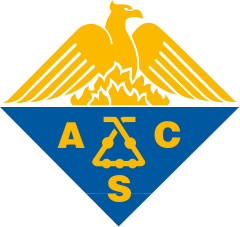Microchemical Journal, volume 175, pages 107133
A facile electrochemical chiral sensor for tryptophan enantiomers based on multiwalled carbon nanotube/hydroxypropyl-β-cyclodextrin functionalized carboxymethyl cellulose
Jie Ji
1
,
Lihang Qu
1
,
Zhenlin Wang
1
,
Guangyao Li
1
,
Wei Feng Wei Feng
1
,
Guang Yang
1
Publication type: Journal Article
Publication date: 2022-04-01
Journal:
Microchemical Journal
scimago Q1
wos Q1
SJR: 0.742
CiteScore: 8.7
Impact factor: 4.9
ISSN: 0026265X, 10959149
Spectroscopy
Analytical Chemistry
Abstract
This study describes a facile strategy to synthesize the electrochemical chiral recognition tryptophan sensor based on carboxymethyl cellulose (CMC) and copper ions-complexed hydroxypropyl-β-cyclodextrin (HP-β-CD) in the presence of MWCNTs (GCE/MWCNTs/CMC-CD-Cu). Compared with D-Trp, the higher electrochemical signal of L-Trp was ascribed to the stronger affinity for L-type tryptophan, and the oxidation peak current ratio (I L /I D ) of DPV could be reached at 2.2 under the optimal experimental conditions. • A facile electrochemical chiral sensor (GCE/MWCNTs/CMC-CD-Cu) for Trp isomer was designed. • The oxidation peak current ratio (I L /I D ) of DPV could be reached at 2.2 under the optimal experimental conditions. • The stronger affinity for L-Trp leads to a higher electrochemical signal than D-Trp. • The sensor can achieve quantitative analysis of tryptophan enantiomers and has lower detection limit for L-Trp (0.81 μM) and D-Trp (1.9 μM). • The electrochemical chiral sensor could be utilized to analyze the amount of D-Trp in the enantiomer mixture solutions. The development of facile and convenient sensors for the chiral recognition of enantiomers is of great significance for medical and life science. Herein, a sensitive electrochemical sensor for the chiral recognition of tryptophan (Trp) enantiomers was developed based on the assembly of cellulose grafted with hydroxypropyl-β-cyclodextrins (CMC-CD), multi-walled carbon nanotubes (MWCNTs) and copper ions on the surface of a GCE. The morphologies and electrochemical behaviors of the prepared electrode (GCE/MWCNTs/CMC-CD-Cu) were characterized by differential pulse voltammetry (DPV), FT-IR, XPS, cyclic voltammetry (CV) and electrochemical impedance spectroscopy (EIS). The oxidation peak current ratio (I L /I D ) of DPV could be reached at 2.2 under the optimal experimental conditions. Compared with D-Trp, the higher electrochemical signal of L-Trp was ascribed to the stronger affinity for L-type tryptophan. Additionally, the as-prepared chiral sensor was successfully utilized to analyze the amount of D-Trp in the racemic mixture.
Are you a researcher?
Create a profile to get free access to personal recommendations for colleagues and new articles.









